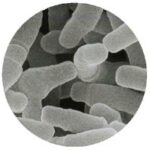 Researchers at Shanghai Jiao Tong University School of Medicine, in China report positive results with a simplified probiotic treatment regimen.
Researchers at Shanghai Jiao Tong University School of Medicine, in China report positive results with a simplified probiotic treatment regimen.
First, the details.
- 120 healthy Chinese women with a history of recurrent bacterial vaginosis were randomly assigned to a treatment group for 7 days of treatment, then 7 days of no treatment, and 7 days of treatment again.
- Vaginal prophylaxis with 1 capsule (Probaclac Vaginal; Nicar Laboratories) containing 8 billion colony-forming units of Lactobacillus rhamnosus, L acidophilus, and Streptococcus thermophilus
- Placebo capsule
- Bacterial vaginosis is the most common vaginal infection, with symptoms that include an odorous vaginal discharge.
And, the results.
- Probiotic preventive treatment (prophylaxis) resulted in significantly lower recurrence rates for bacterial vaginosis (16% vs 45%) and Gardnerella vaginalis incidence through 2 months (4% vs 18%).
- Gardnerella vaginalis is an infection of the female genital tract.
- Between the 2- and 11-month follow-up periods, women who received probiotics reported a lower incidence of bacterial vaginosis and G. vaginalis.
- No side effects were reported in either study group.
The bottom line?
Aside from the effectiveness of the probiotic treatment, most interesting is that long-term prevention (11 months) required a short period of treatment — 2, 7 day treatments separated by 7 days off treatment.
Earlier this year, researchers in Italy reported the effectiveness of a long-term (24 months) intravaginal treatment with Lactobacillus rhamnosus (Normogin) on vaginal symptoms in 40 women with bacterial vaginosis.
There’s a need for convenient preventive therapy. Researchers in Belgium, in a review of the treatment of bacterial vaginosis concluded, “Treatment remains cumbersome and clinicians are currently rather poorly armed to treat bacterial vaginosis in the long run.”
9/13/10 21:54 JR